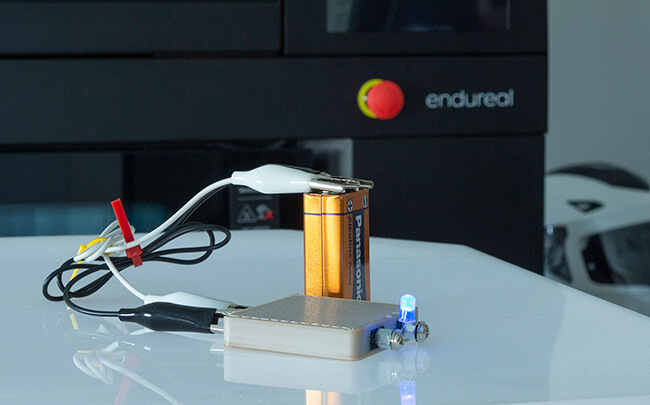October was an astronomical month for aerospace news, as NASA made significant progress in its preparation for the Artemis Moon mission, while printer manufacturer Zortrax worked with the ESA to develop space-age blended PEEK electronics.

NASA projects take-off in run-up to Artemis
One of the biggest stories in October was the news that construction firm ICON had been awarded a NASA contract to develop an off-world AM system. During the project, codenamed ‘Olympus,’ ICON will work with the Marshall Space Flight Center to create a 3D printer that’s capable of turning lunar regolith into cosmic structures.
In another mission, Lockheed Martin was contracted by NASA to test its experimental cryogenic fuel systems, and the firm selected Relativity Space’s additive rockets to fire them into orbit. Relativity, which was chosen due to the flexibility of its process, is set to launch the potentially dangerous cargo in 2023.
NASA also awarded the University of North Dakota $750,000 in funding towards the development of its 3D printed NDX-3 spacesuit. The additive garment is set to be fabricated using a combination of flexible polymers over the next three years, before being compared to conventional flight suits via motion capture testing.

Zortrax’s additive electronic advances
3D printed electronics made several strides forward during the month, starting with Zortrax and the ESA’s joint R&D project, which yielded prototype conductive PEEK filaments. Using their new materials, the team 3D printed multifunctional aerospace parts with data and electricity transfer capabilities.
Scientists from the University of New York at Buffalo and MIT, meanwhile, created a novel ferroelectric metamaterial for SLA 3D printing. According to the team, their composite resin could represent a step towards making synthetic materials more affordable within acoustic, shock absorbing and electronics applications.
Elsewhere, another MIT team developed a new 3D design environment that enables users to model both an object’s physical and electronic functions. Nicknamed the ‘MorphSensor,’ the program blends CAD and circuit building software together, to allow parts to be designed with optimal mechanical qualities.

The U.S. Army deploys 3D printing projects
The U.S. Army, which has a long tradition of leveraging additive technologies, embarked on a mission to 3D scan a 20,000-piece Black Hawk helicopter in October. In the teardown project, led by Wichita State University, the team developed a 3D printable catalog of all the aircraft’s components, allowing them to be reverse-engineered and optimized.
“We’ll evaluate every part, and not every part is necessarily going to be optimized for advanced additive manufacturing,” said Major General Todd Royar at the time. “But our intent is to literally go through all of our parts, starting with the UH-60, because those are the first ones we’ll have the 3D files for.”
Working with several U.S-based universities, the U.S. Army’s Research Laboratory also created a miniature 3D printed holographic instrument. The additive device proved capable of characterizing multiple airborne particles, and it could be deployed to identify potential aerosol threats to warfighters on the battlefield.

Fashionistas develop fabricated fashion lines
Textile 3D printing continued to gain traction in the fashion world, and Milanese designer Chiara Giusti exemplified this trend with her additive TECHNĒ clothing line. Developed alongside Superforma Fablab, the dresses were 3D printed using tension-activated TPUs, that could be both tailored to fit and comfortable to wear.
Similarly, London-based fashion designer Mingjing Lin completed her research into the potential of parametric modelling in October. According to Lin, fluidity in 3D printed textiles can be achieved using new modelling algorithms, such as those she previously deployed working with Sinterit to design an outfit for a Beijing Opera performance.
“I am proposing that fashion and textiles designers can embed our knowledge of complex body shape and body movement, as well as the sensibility of the tactile materials, into the application of these digital tools for creating intricate, fluid, and drapeable designs,” said Lin.
To stay up to date with the latest 3D printing news, don’t forget to subscribe to the 3D Printing Industry newsletter or follow us on Twitter or liking our page on Facebook.
Are you looking for a job in the additive manufacturing industry? Visit 3D Printing Jobs for a selection of roles in the industry.
Featured image shows a concept image of what ICON’s 3D printed off-world structures could look like. Image via ICON.



